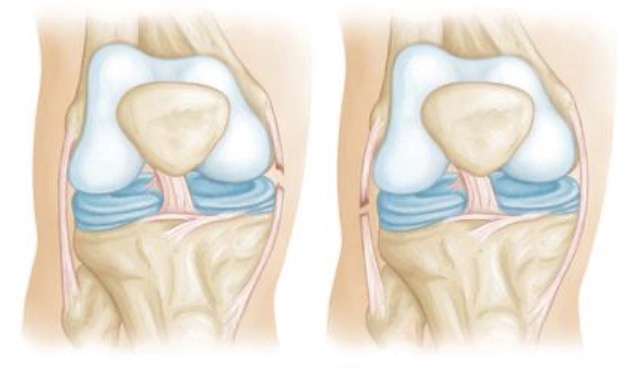What are the collateral ligaments?
The collateral ligaments are many minor ligaments arranged in different directions and layers, which mesh together into one single strong ligament, with one found on each side of the knee; one on the inside, the medial collateral ligament and one on the outside, the lateral collateral ligament.
How do they get injured?
A ligament injury may occur when the knee is strained from the inside, but more often, it will be caused by a force from the outside, such as being tackled from the side. As the knee is pressed together on the outside and forced apart on the inside, the ligaments on the inside of the knee will be damaged.
When a collateral ligament is injured, the extent of the damage may vary from just a small tear in one of the small ligaments to a total rupture of the collateral ligament.

Who gets these injuries?
Athletes playing contact sports such as rugby and football are at a higher risk, especially with potential for direct blows to the outside of the knee.
What symptoms would I have?
The most common symptoms patients report are of knee pain, swelling and tenderness along the ligament. Often these symptoms are worse a couple of days after the injury.
How would it be diagnosed?
During your orthopaedic consultation, history and examination findings would help with the diagnosis, especially if there was any looseness when the knee is gently moved from side to side.
Imaging techniques including X-rays and Magnetic Resonance Imaging would be used to assess the collateral ligaments and also to identify other knee problems.
How is it treated?
Initial treatment with tablet analgesia, ice, elevation and rest is the first line. The knee may need to be splinted in a brace for up to 6 weeks to help the ligaments heal. These injuries rarely require surgery.
Physiotherapy is used to maximise knee strength and stability, whilst teaching you to avoid positions and movements that would worsen your symptoms.
When would I get back to normal?
Most people return to their normal daily activities in 6 weeks, depending on the severity of the injury.